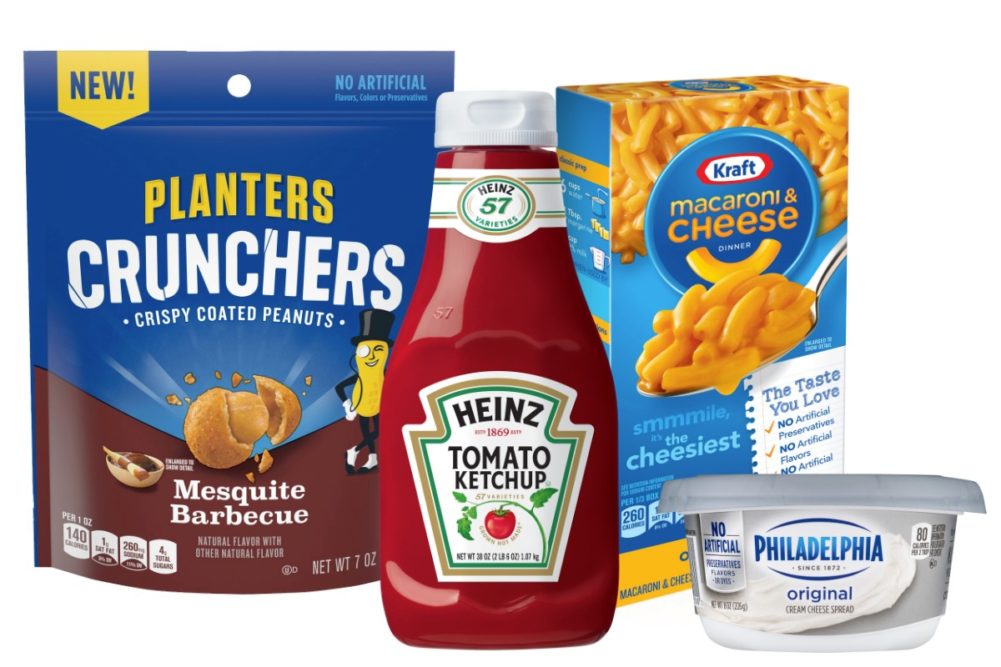PITTSBURGH — Kraft Heinz Co. management made progress in turning the business around in fiscal 2019 and sees fiscal 2020 as a year of stabilization. Plans in place to achieve its goals include revamping its innovation processes, improving customer satisfaction and reducing employee turnover.
CEO Miguel Patricio has shifted the company’s innovation strategy to a focus on fewer, bigger and bolder initiatives.
“Our 2020 plans now call for 50 percent fewer projects, a significant shift from line extensions to expansionary launches, mainly behind existing brands,” he said Feb. 13 during a conference call with analysts to discuss the company’s fiscal 2019 earnings.
While the number of product development projects are forecast to be cut in half, management sees “innovation net sales” rising 1 percent during the year and compared with fiscal 2019. Eighty-six per cent of those sales will come from existing brands, and 48 percent of the projects will focus on category expansion, 38 percent will include line extensions and 14 percent will focus on disruption, according to the company.
“We are going to cut everything that is not accretive, that is cannibalistic,” Patricio said. “That thing by itself helps a lot with complexity, helps with our customer relationship, helps with us focusing on what really matters and putting our energy and our budget behind innovation that moves the needle.”
The company will also accelerate its stock-keeping unit (SKU) reduction efforts that will bring the company’s product portfolio below fiscal 2016 levels, said Pablo Luiz Araujo Basilio, global chief financial officer.
“In 2020, we foresee better product mix through focused investments and rationalizing underperforming SKUs to remove complexity from our supply chain,” he said. “In fact, 2019 was the first year our US zone reduced its total SKU count since the Kraft Heinz merger.”
Steps taken to improve employee satisfaction and reduce turnover include improving employee engagement, creating key performance indicators (KPIs) for every member of the company’s management team, making total company KPIs more weighted toward profitable growth and setting targets that are better aligned cross functionally.
“We’ve taken the time to reflect and reassess the root causes of performance shortfalls, employee satisfaction and, ultimately, turnover with causes ranging from lack of strategic direction to training, to roles and accountabilities,” Patricio said.
In terms of customer service, Patricio said Kraft Heinz is in the third quartile of its peers in terms of customer satisfaction and it is his intention the company will move up.
“… We understand what needs to be done and are taking action to improve in areas like customer planning and in-store execution,” he said.
For fiscal 2019, ended Dec. 28, Kraft Heinz net income totaled $1,935 million, equal to $1.59 per share on the common stock. During fiscal 2018, the company recorded a loss of $10,912 million as it took significant write downs against the value of its Kraft and Oscar Mayer brands.
Sales for the year fell to $24,977 million in fiscal 2019 from $26,268 million the year prior.
“Twenty-nineteen was a very difficult year for Kraft Heinz,” Patricio said. “We closed the year with a much firmer handle on the business. Numbers-wise, while organic net sales were down slightly, more on a sequential basis, the key drivers were as we anticipated, with consumption, share trends and shipments in the United States, Canada and EMEA in line with our expectations.”
The company did not provide an outlook for fiscal 2020 but did highlight several headwinds that will affect profitability. Kraft Heinz’s adjusted EBITDA in fiscal 2019 was $6,064 million. Items seen affecting EBITDA in fiscal 2020 include divestitures that will result in a $110 million reduction in EBITDA, supply chain cost inflation ($150 million) and unfavorable currency translation ($60 million).
“This totals approximately $460 million relative to 2019 EBITDA,” Basilio said. “Of that total, approximately $310 million of impact should be realized in the first half of the year and result in a roughly 49 percent first-half, 51 percent second-half split to EBITDA for the year.
“Beyond these factors, we expect to stabilize and align profitability and maintain industry-leading margins as we find efficiencies to reinvest behind our brands, improve capabilities and rebuild business momentum.”



